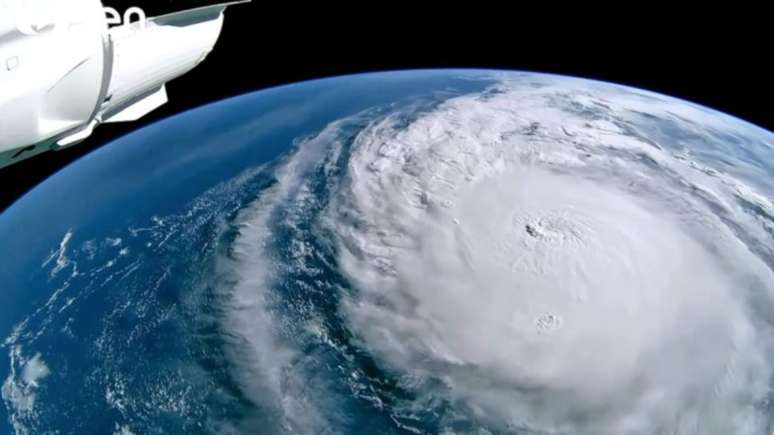The seasonal phenomenon is active in the northern hemisphere and mainly affects the Florida region; this Wednesday (9), Milton is scheduled to arrive
Hurricanes in the Northern Hemisphere are frequent events, especially at this time of year. This Wednesday (9th) the arrival of Milton, one of the strongest ever recorded in the Atlantic, is expected to advance through the Gulf of Mexico and reach the coast of Florida. Milton reached category 5 on Monday (7), with winds of up to 290 km/h. In less than two weeks, this is the second major hurricane to hit the region. The hurricane Elenapreviously approved, caused the deaths of 230 people in several states in the southeastern United States.
the term “hurricane” refers to tropical cyclones that form in the Atlantic and northeast Pacific oceans. In other parts of the world these phenomena take different names, but maintain similar characteristics. In the Pacific Northwest, for example, they are called typhoons, while in the South Pacific and Indian Ocean they are known as cyclones.
Hurricane scale
The intensity of hurricanes is measured by the scale Saffir-Simpsonwhich classifies storms into five categories based on wind speed and potential for destruction. They are considered Category 3 or higher hurricanes “big” thanks to its high power of devastation. However, even minor ones can pose serious risks and require safety actions.
Category 1 hurricanes, with winds between 70 and 90 mph, cause damage to roofs, trees and branches and can also cause power outages. Category 2, with winds between 154 and 177 km/h, already presents a greater risk of destruction, hitting doors and windows. From category 3 onwards, with winds between 178 and 208 km/h, the damage is serious, including the destruction of roofs and the fall of trees and poles. Category 4, with winds between 209 and 251 km/h, destroys homes and transforms the affected areas into uninhabitable places for weeks or months. Category 5 hurricanes, like Milton, have winds exceeding 150 mph (252 km/h) and destroy virtually all structures, leaving areas without electricity and without homes for long periods.
Advance of Hurricane Milton
On Tuesday (8), millions of Florida residents began to evacuate risk areas, causing severe congestion on highways and running out of fuel supplies at several gas stations. This exodus could become one of the largest ever recorded in the state. The forecast is that Milton, one of the most powerful hurricanes ever documented, will hit the region today (9). The President of the United States, Joe Bidenwarned that this could be the “worst hurricane to hit Florida in 100 years”.
Milton was initially rated Category 5 on Monday (7), with winds reaching 290km/h. On Tuesday the storm lost strength and dropped to category 4, with winds of 265 km/h, but by the end of the day it intensified again and was again reclassified to category 5. The authorities, including the president himself, asked all residents of vulnerable areas immediately leave the region.
Source: Terra
Rose James is a Gossipify movie and series reviewer known for her in-depth analysis and unique perspective on the latest releases. With a background in film studies, she provides engaging and informative reviews, and keeps readers up to date with industry trends and emerging talents.







